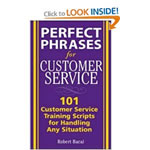
Personal Styles -- Time-Waster or Useful - Should You Join The MBTI Shuffle?
You can find them almost everywhere. Myers-Briggs, Enneagrams, leadership styles, learning styles, communication styles, teaching styles, conflict management styles...all designed to classify or label people so they can better understand themselves and others. More and more training vendors are using style questionnaires as a basis for training and development. The question is: are they really useful, or are they just fun exercises akin to astrology?
Overview
Style questionnaires usually consist of a number of items. Format may vary. In some, you may be asked to choose one of two activities (forced choice), while in others you may choose one option from a set of four or five. After you have completed all of the questions, you tally up your scores to determine which category of style is your most dominant. If it's a decision- making/leadership style instrument, you may fall into one of the following categories: autocratic, consultative, participative or laissez faire. If it's a conflict management style instrument, you may fall into the following: avoider, confronter, compromiser, or cooperator. Generally, your results will give you a "reading" of your preferred style, a secondary style, and your least preferred style.
Advocates for the use of these kinds of instruments claim that they will help you:
. understand yourself better
. understand how other people see you
. develop style flexibility (eg. situational behaviour)
. understand others with different styles, and become more
tolerant of stylistic differences
. build better teams
Things You Should Know
1. Psychological research indicates that people's behaviour is not very consistent. It is naturally situationally specific. For example, you may use one conflict management style with a subordinate, and an entirely different one with your boss, regardless of what your "preferred style" might be. Your behaviour, in any given situation, is largely determined by the situation, NOT your preferred style. So, style questionnaires are a relatively poor predictor of what you (or someone else) will do in the real world.
2. There is a tendency for people completing these types of questionnaires to respond in a way that is consistent with how they would like to be, rather than they way they actually behave. For example, few people want to see themselves as wimpy conflict avoiders, so it isn't surprising that you don't come across too many people that fall into this category. Since many instruments are pretty easy to "figure out", there is a tendency for people to respond in ways that they feel will present themselves in a positive light.
3. In many cases, the descriptions you receive as part of the interpretation of your score(s) are sufficiently general as to fit almost anyone. At least some of it is going to fit, much like the astrology predictions one finds in the newspaper.
4. Many trainers, or test administrators know that people are interested in themselves, and will become highly motivated when they are given the opportunity to "find out about themselves". Taking a test about oneself is fun, and exciting, and often this excitement will obscure the fact that the instrument is poor, and the interpretations overly general.
5. Many trainers or test administrators have had little training in the use of instruments. Almost anyone can purchase questionnaires and offer them to clients. As a result trainers may not be aware of the limitations of the instruments or the interpretations, having had little or no education in test theory, or psychology.
On The Negative Side
The negative side of training based on these instruments is that things appear scientific. The limitations of the approach are not always explained, and it is possible to take the enterprise far too seriously. In the hands of an unqualified trainer or consultant, the process becomes more of a fun parlour game, rather than a useful one.
The primary danger here is that we will take the results far too seriously. Human behaviour is so complicated that a quick style assessment instrument simply cannot do justice to human complexity. In the hands of trainers with a limited background in testing or psychology, the results can be "oversold".
Finally, there is no guarantee that a person's behaviour will change as a result of taking one of these courses, or instruments. There is no guarantee that they will become better team members, more tolerant, or more effective. What they will be able to do is label themselves or others as being of a particular style. They may learn to explain a person's behaviour (or their own) as being a result of a style preference, and that explanation will almost always be overly simplistic.
On The Positive Side
Besides being fun, these kinds of instruments have one primary benefit. They encourage people to be reflective about themselves and others. Even if the results of these instruments are totally bogus, and have no relationship with real world behaviour, people tend to look at themselves a bit more carefully. This is good. Whenever people think about themselves and their own behaviour, there is a chance that they will find better, or different ways to behave.
Recommendations
1. Approach test results as suggestive at best. Be aware that your behaviour is determined by many factors, and that most tests are very general.
2. If you are contemplating attending a training course based on style identification, inquire as to where the trainer learned to administer the test. If they "learned it from a book", then it is likely that they will have insufficient background to use the test properly. Look for people that have some form of formal training or certification. This is no guarantee that they will have the breadth of knowledge to point out the test limitations, but at least they will understand the instrument they are using.
3. If you think that having your team identify their particular styles is going to increase tolerance and team effectiveness, think again. On its own, it can create as many problems as it solves. It is possible that people will understand each other, but it is just as likely that they will use style labels to justify their intolerance.
4. Find out how the particular test was developed. Ask how the validity of the test was determined, and whether it is reliable. Validity and reliability of tests are very technical topics. However, if the trainer can't answer your questions, or doesn't understand them, then you can pretty much assume that he or she is not competent to use the instrument.
5. Finally, approach these forms of tests as fun exercises that may encourage reflection. Don't get fooled by the appearance of science here unless the instrument has been thoroughly tested, and take the interpretations with a grain of salt. They should be seen as suggestive, not absolute, and can be used to stimulate discussion and thinking. Remember that no test can capture the complexity and flexibility of human behaviour.
Note: We invite comments, and letters on this topic. If you are a proponent of this type of assessment, please feel free to present your position on the benefits of style assessment instruments. We will attempt to provide you with a forum to rebut these comments.





